Gorilla Trekking Vs Chimpanzee Tracking
Bujuku Eco Tours2025-10-01T17:50:43+03:00Gorilla Trekking Vs Chimpanzee Tracking: Gorilla and chimpanzee trekking are two unique primate experiences, but each offers nature lovers a chance to witness their favorite primates in their natural habitats. Gorilla trekking and chimpanzee tracking introduce visitors to the lush tropical rainforest in Africa. This travel guide provides insights into gorilla trekking Vs chimpanzee tracking.
Comparing Gorilla Trekking & Chimpanzee Tracking
Gorilla trekking is a unique primate adventure offering visitors a lifetime opportunity to witness mountain gorillas in their natural habitat. Chimpanzee tracking mainly focuses on up close with chimpanzees.
Where to go for gorilla trekking and chimpanzee tracking
Gorilla trekking is conducted in fewer places than chimpanzee tracking. To trek mountain gorillas in Africa, the best places to visit include Uganda, Rwanda, and the Democratic Republic of Congo (DRC). In Uganda, you can engage in the trek with mountain gorillas in Bwindi Impenetrable National Park or Mgahinga Gorilla National Park. Visitors interested in Rwanda gorillas can explore Volcanoes National Park, and in the DRC, expect to visit the Virunga National Park. Gorilla trekking tours in Africa don’t only focus on mountain gorillas but also on lowland gorilla encounters. To see the Eastern lowland gorillas, the ideal place to visit is the Kahuzi-Biega National Park.
To track chimpanzees in East Africa, visitors have many options. In Uganda alone, you can witness chimpanzees in their natural habitat across the different destinations, including Kibale National Park. Other chimpanzee tracking sites in Uganda include Kalinzu Forest Reserve, Budongo Forest, Semuliki, and Kyambura Gorge.
Chimpanzee tracking is also possible in Nyungwe Forest National Park and Gishwati-Mukura National Park in Rwanda or Tanzania’s Mahale Mountains National Park. Chimp and gorilla treks offer genuine encounters with the Great Apes while they are immersed in the wild. Adventure in the African jungle and get up close with these apes leaves lasting memories.
Hours spent during gorilla trekking & chimpanzee tracking
While both gorilla and chimpanzee trekking involve searching for already habituated troops/families, each of these adventures take a certain period of time. A guided trek to see mountain gorillas takes about 2 to 6 hours less or more, and this depends on the visitor’s hiking speed, the nature of the habitat, and the location of the gorillas.
A chimpanzee tracking adventure can last for about 2-4 hours. Like gorilla trekking, the duration for chimpanzee trekking also depends on the visitor’s walking speed, the location of the chimpanzees, and the nature of the habitats.
Cost of permits (gorilla Vs chimpanzee trekking)
Valid permits are essential for both chimpanzee and gorilla trekking. The cost of gorilla permits is the same across if you are visiting Bwindi or Mgahinga –this is for the case of tourists on the Uganda gorilla tour. The breakdown of gorilla permit rates is as follows: the foreign non-residents (international visitors) pay USD 800 per person; the foreign residents USD 700, and the Rest of Africa USD 500 per person, and East Africans pay a permit at UGX 300,000.
Gorilla trekking permits in Rwanda can be secured at USD 1500 for all visitor category. In the Democratic Republic of Congo, gorilla permits are available for both mountain gorilla and lowland gorilla trekking at USD 400 per visitor.
The cost of chimpanzee tracking permits varies depending on the destination. If you are visiting Kibale National Park, permits for trekking chimpanzees cost USD 250 per person applying to foreign nonresidents, USD 200 per visitor for foreign residents, and Ugshs. 180,000 per person. Kyambura Gorge chimp permits are open for booking at USD 100 per visitor for foreign nonresidents, USD 80 per guest under foreign residents, and shs. 50,000 per person for all East African citizens.
If you have plans to travel to Nyungwe to track chimpanzees, then expect to secure a permit at USD 250 per person for all foreign nonresidents. The foreign residents can obtain Nyungwe chimp trekking permits for USD 75 per person. The East Africans pay USD 25 per person to book a valid chimpanzee permit for Nyungwe Forest National Park.
In comparison, the cost of chimpanzee permits is slightly lower than the rates for obtaining a valid gorilla trekking permit. Obtaining a chimp or gorilla permit in Uganda or Rwanda is easier and safer through a reliable tour operator. Contact Bujuku Tours to plan and secure your primate trekking slot in advance.
Besides the normal chimpanzee and gorilla tracking permits, visitors can also secure habituation permits. Chimpanzee habituation is best done in Uganda’s Kibale National Park or Budongo Forest. Gorilla habituation is a unique gorilla adventure offered only in the Rushaga region in Bwindi Impenetrable National Park. Gorilla or chimpanzee habituation involves spending the long day as you follow the unhabituated gorilla family or chimpanzee community.
How many visitors go to track chimpanzees/gorillas?
Chimpanzees and gorillas are among the 2 exceptional primates and share a lot in common with humans. A maximum of 6 tourists are allowed to track a chimpanzee community compared to 8 visitors per gorilla group.
Different trekking sessions
Gorilla trekking is enjoyed during only one session per day. This is different from chimpanzee tracking, where you can have the morning and afternoon sessions. Trekking with gorillas and chimpanzees requires certain levels of fitness to enjoy a round trip. Gorillas and chimpanzees keep moving in search of food, and treks are conducted in varying altitudes. Mountain gorillas live slightly higher elevations than chimpanzees. This makes it literally impossible to have two gorilla trekking sessions.
Gorillas Vs chimpanzees
Gorillas are the world’s biggest primates, and they are nicknamed ‘gentle giants.’ Gorillas live in small patriarchal groups/families led by a dominant silverback –a mature male silverback gorilla. At mature age, a male gorilla can weigh about 220 kg, and when standing, it can measure about 1.8 meters tall. The male gorillas are larger than the female gorillas. Chimpanzees are also among the most social primates and live in a patriarchal community. Each community of chimpanzees can consist of many individuals, including a mature alpha chimpanzee. When standing, a mature chimpanzee can measure about 1.6 meters. The males weigh about 154 pounds, and the females weigh 110 pounds.
Preparation for the gorilla and chimpanzee trek
When you think about undertaking a chimp or gorilla trek, key aspects must be sorted. First, you should ensure that you are fit enough to have a complete round trek with gorillas or chimpanzees. These primate adventures usher visitors deep into the jungle. The search for chimpanzees and gorillas involves physical walking, hiking, and the entire tour requires you to be fit. Considering adequate exercise before the actual date of visiting gorillas or chimpanzees should be a must. This can make you physically fit and enjoy trekking with the Uganda gorillas. Leave your home country when certain about your fitness levels.
Packing for gorilla and chimpanzee tracking
Packing the right gear is essential when it comes to gorilla and chimpanzee trekking adventures. Items you should consider on your packing list for gorilla and chimp trekking include a waterproof daypack, long-sleeved shirts, a camera, a valid permit, a safari hat, waterproof and strong walking boots, and sunglasses. Additional items to pack include energy-giving snacks, adequate bottled drinking water, a rain jacket, long pants, gardening gloves, long trousers, a first aid kit, and all essentials that can enable you to enjoy a successful chimp or gorilla trekking session.


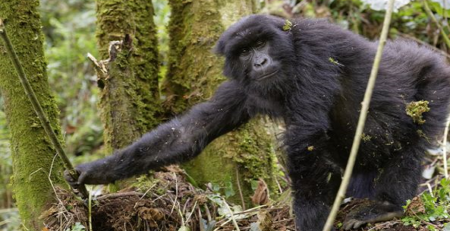

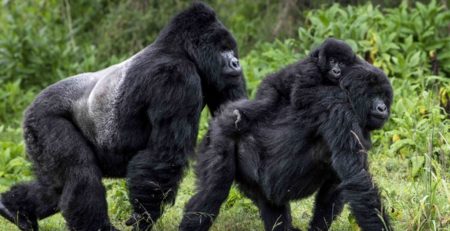

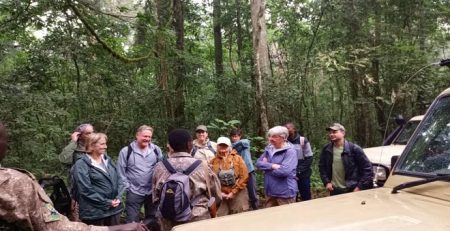



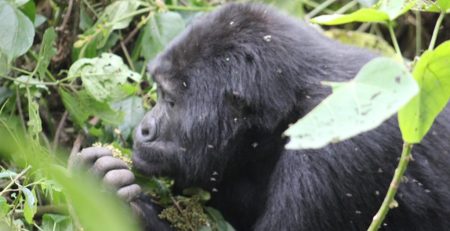
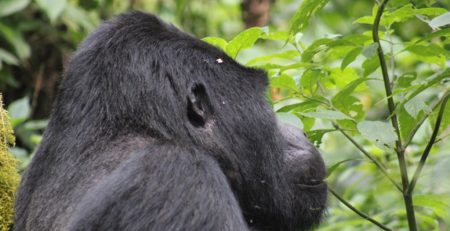
Leave a Reply